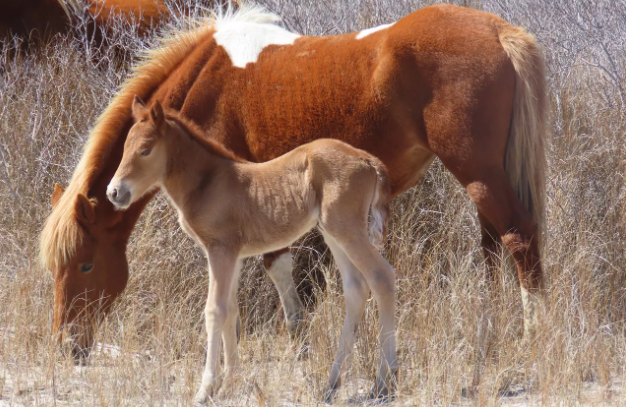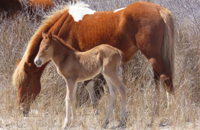ASSATEAGUE ISLAND, Md. — The wild horse population at Assateague Island National Seashore continues its steady growth, reaching 79 horses in the March 2025 census. This increase brings the Maryland herd closer to its targeted range of 80 to 100 individuals, set by park managers to protect the barrier island ecosystem.
The latest census, conducted annually each March, revealed 32 stallions and 47 mares, including one new filly born this spring. According to the National Park Service, this year’s count marks a rise from 73 in March 2024 and 75 in March 2023. In the past year, four horses have died and 10 have been born.
The March count holds particular significance as it typically follows the bulk of winter-related deaths and precedes the main foaling season. This timing allows park staff to better track long-term trends in herd health and population dynamics.

Horse population growth on Assateague Island National Seashore, 1968-2025. Blue line - horse population, orange bar – target population range of 80-100 individuals (NPS Image)
Horse population management at Assateague Island has been active since 1994, when the National Park Service implemented a fertility control program to curb overpopulation. As a result of years of monitoring and controlled breeding, the population now hovers near the optimal range. The most recent contraception was administered in 2016 to a single two-year-old mare.
Wild horses on Assateague, while iconic, are an introduced species with no natural predators, and without intervention their numbers could significantly damage native vegetation and wildlife habitats. According to the park, keeping the herd within the targeted range ensures ecological balance while preserving the unique character of the island.
With foaling season underway, park staff remind visitors to give the animals space.
“Only one foal has been born so far this season, but several more are expected,” the park said in a statement. “We ask that all park visitors join us in support of efforts to protect these expectant mares from the added stress and disturbance that upcoming births tend to attract."










